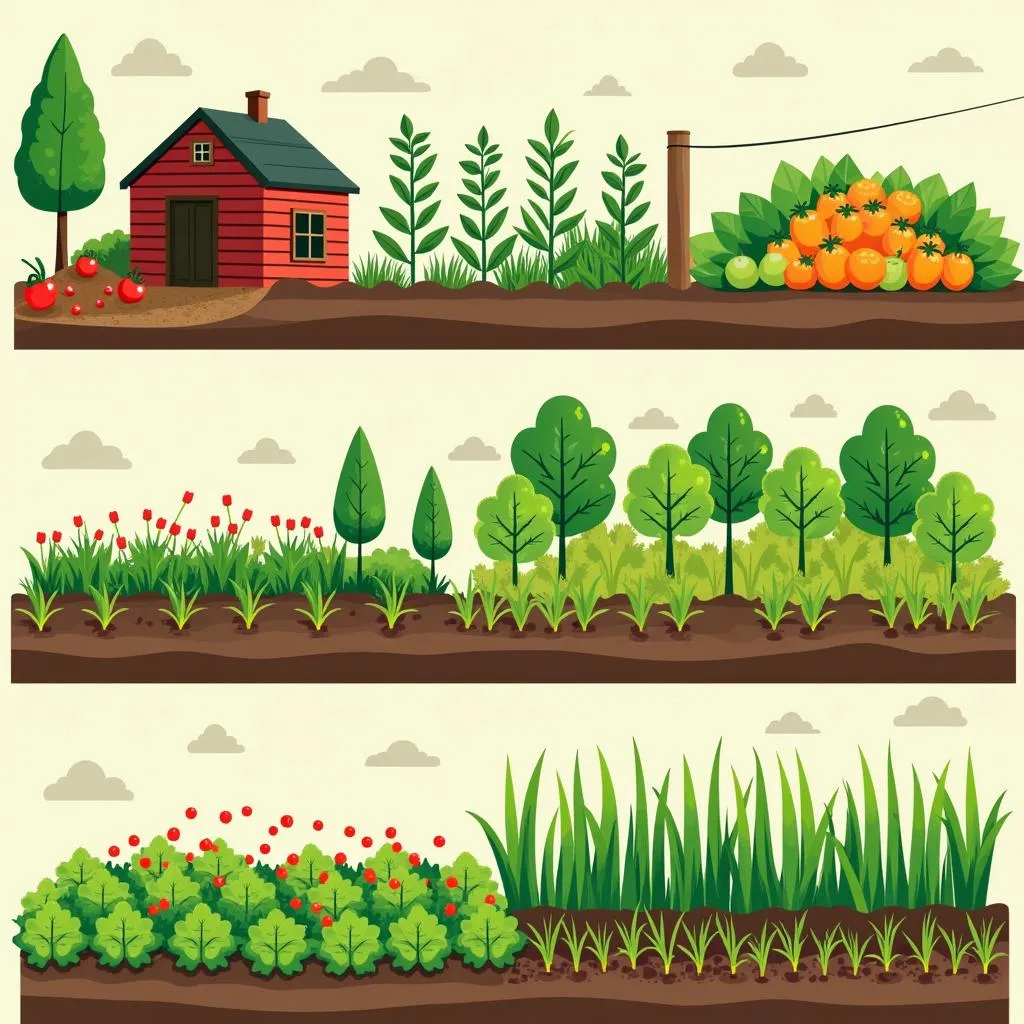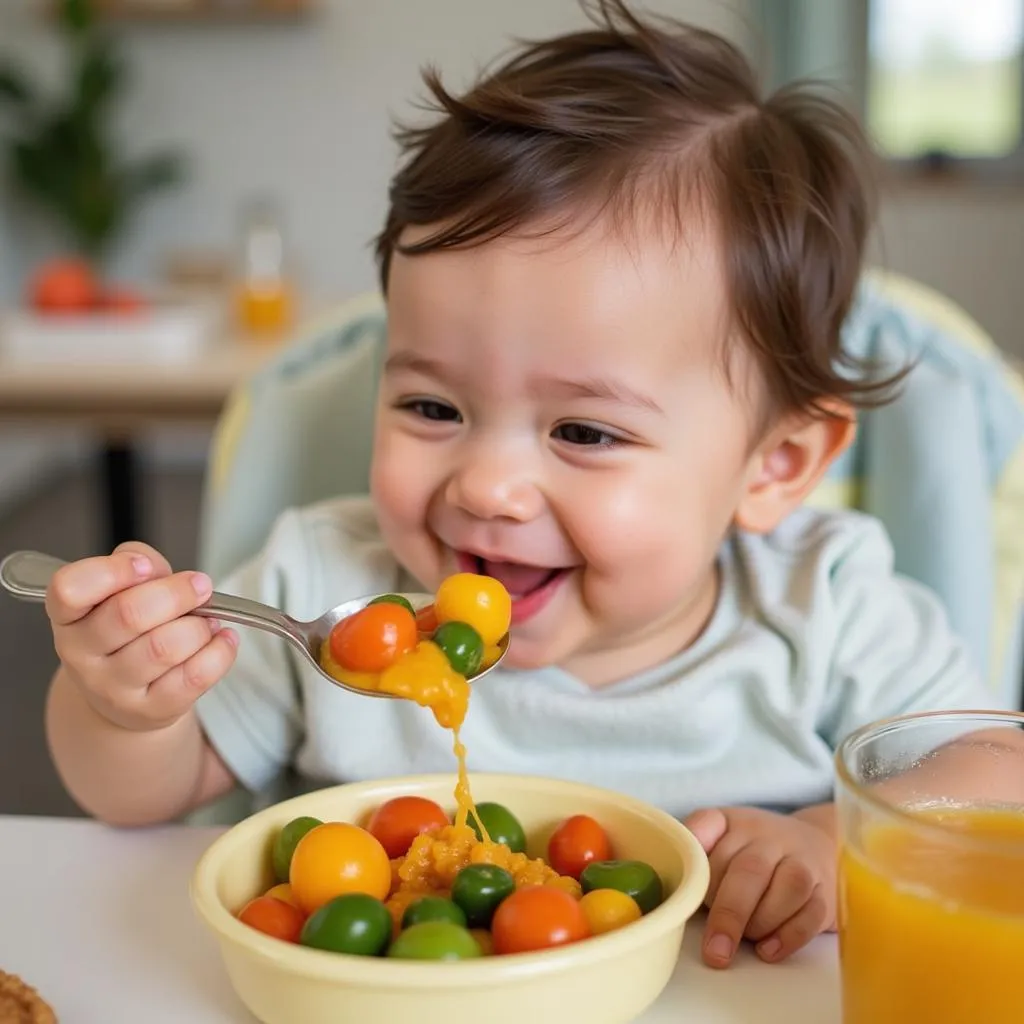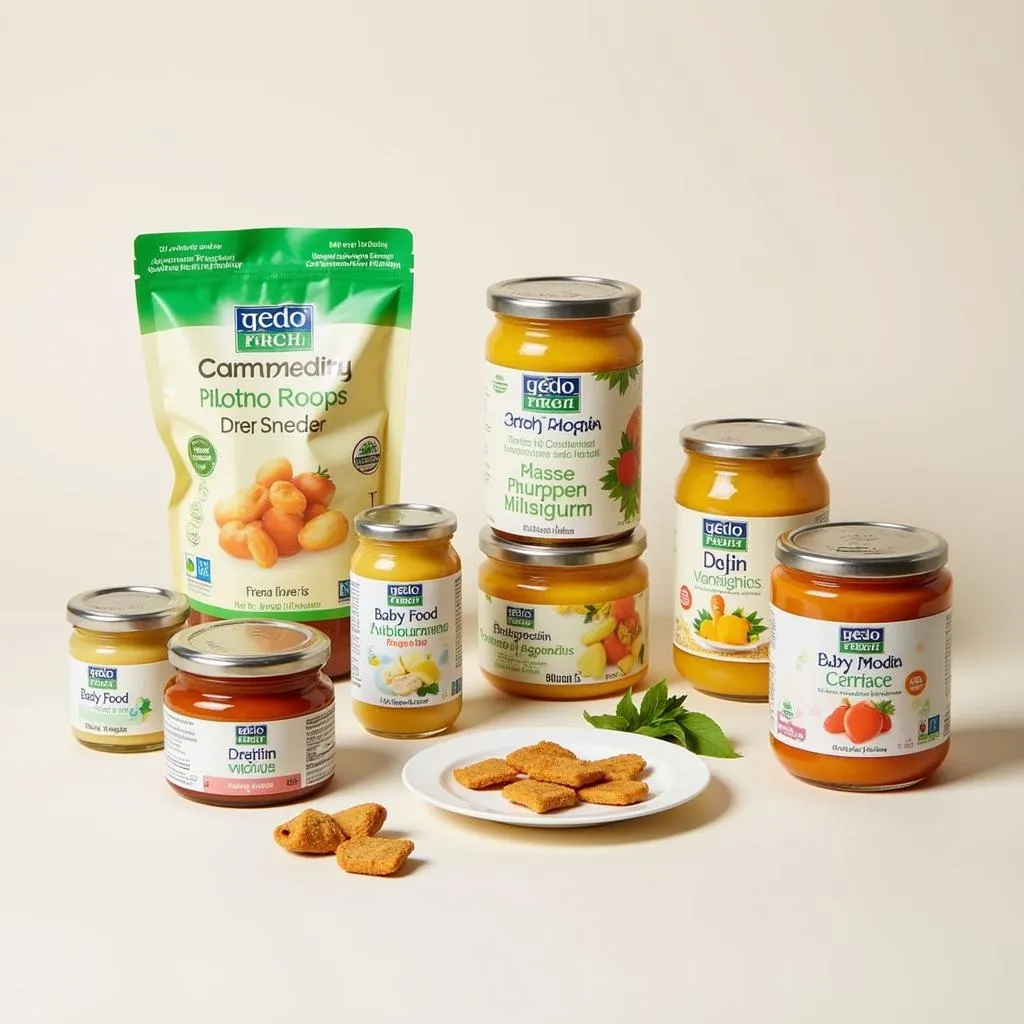Regeneratively Farmed Baby Food is quickly becoming the gold standard for parents who are passionate about providing their little ones with the most nutritious and sustainable food options. But what exactly does it mean, and why should you consider making the switch? This comprehensive guide explores the ins and outs of regeneratively farmed baby food, empowering you to make informed choices for your family’s well-being and the planet’s health.
 Regenerative Farming Practices
Regenerative Farming Practices
Understanding Regenerative Farming: Beyond Organic
While organic farming has been a step in the right direction, regenerative farming takes a more holistic approach. It goes beyond simply avoiding synthetic pesticides and fertilizers; it focuses on actively rebuilding soil health, sequestering carbon from the atmosphere, and promoting biodiversity.
Imagine a farm where the soil is teeming with life, thanks to practices like cover cropping, composting, and minimal tillage. This rich, healthy soil produces more nutrient-dense fruits, vegetables, and grains, forming the foundation for high-quality baby food.
Why Choose Regeneratively Farmed Baby Food?
The benefits of choosing regeneratively farmed baby food are multifold, positively impacting your baby’s health, the environment, and the livelihoods of farmers. Here’s why it matters:
- Enhanced Nutrition: Studies suggest that food grown in healthy, living soil contains higher levels of essential vitamins, minerals, and antioxidants compared to conventionally grown produce.
- Reduced Toxic Load: Regenerative farming prohibits the use of harmful pesticides and herbicides, minimizing your baby’s exposure to these potentially harmful chemicals.
- Environmental Stewardship: By promoting soil health and carbon sequestration, regenerative agriculture actively combats climate change and protects our planet’s precious resources.
- Supporting Sustainable Farming: Choosing regeneratively farmed products supports farmers who are committed to ethical and environmentally responsible practices.
 Happy Baby Eating
Happy Baby Eating
Making the Switch: Finding and Choosing Regenerative Brands
Navigating the world of baby food can feel overwhelming, but finding regeneratively farmed options is becoming increasingly easier. Here’s what to look for:
- Certifications: Keep an eye out for certifications like Demeter (Biodynamic), Regenerative Organic Certified, and Savory Institute Land to Market, which ensure rigorous standards are met.
- Brand Transparency: Choose brands that are open and transparent about their farming practices. Look for detailed information on their websites or product packaging.
- Local Farmers Markets: Connecting with local farmers at markets allows you to ask questions directly and learn more about their growing methods.
Beyond the Label: Tips for Incorporating Regenerative Foods
- Prioritize Whole Foods: When possible, opt for whole, minimally processed regenerative foods like fruits, vegetables, and grains as the foundation of your baby’s diet.
- Start Small: You don’t have to overhaul your entire pantry overnight. Begin by gradually incorporating a few regeneratively farmed options into your baby’s meals.
- Spread the Word: Share your knowledge about regenerative farming with friends and family, encouraging them to join you in supporting this sustainable food system.
 Regenerative Baby Food Options
Regenerative Baby Food Options
Investing in a Healthier Tomorrow: One Bite at a Time
Choosing regeneratively farmed baby food is about more than just nourishing your little one; it’s an investment in a healthier and more sustainable future for generations to come. By making conscious choices today, we can create a brighter tomorrow for our children and the planet.
Frequently Asked Questions
1. Is regeneratively farmed baby food more expensive?
While regeneratively farmed products might have a slightly higher price tag than conventional options, the long-term benefits for your baby’s health and the environment make it a worthwhile investment.
2. Where can I find regeneratively farmed baby food near me?
Check out health food stores, online retailers specializing in organic and regenerative products, and local farmers markets in your area.
3. Can I make my own regeneratively farmed baby food at home?
Absolutely! Sourcing regenerative ingredients and preparing baby food at home allows you to have complete control over the quality and freshness of the food your baby consumes.
4. What are some easy first foods to introduce from regenerative farms?
Soft, easily digestible fruits like bananas, avocados, and sweet potatoes are great options. As your baby gets older, you can introduce vegetables like carrots, squash, and peas.
5. How can I learn more about regenerative farming practices?
Numerous online resources, books, and documentaries delve deeper into the principles and benefits of regenerative agriculture.
For personalized support in navigating the world of regenerative baby food, don’t hesitate to reach out to our team at Phone Number: 02437655121, Email: minacones@gmail.com Or visit us at: 3PGH+8R9, ĐT70A, thôn Trung, Bắc Từ Liêm, Hà Nội, Việt Nam. We are available 24/7 to assist you.